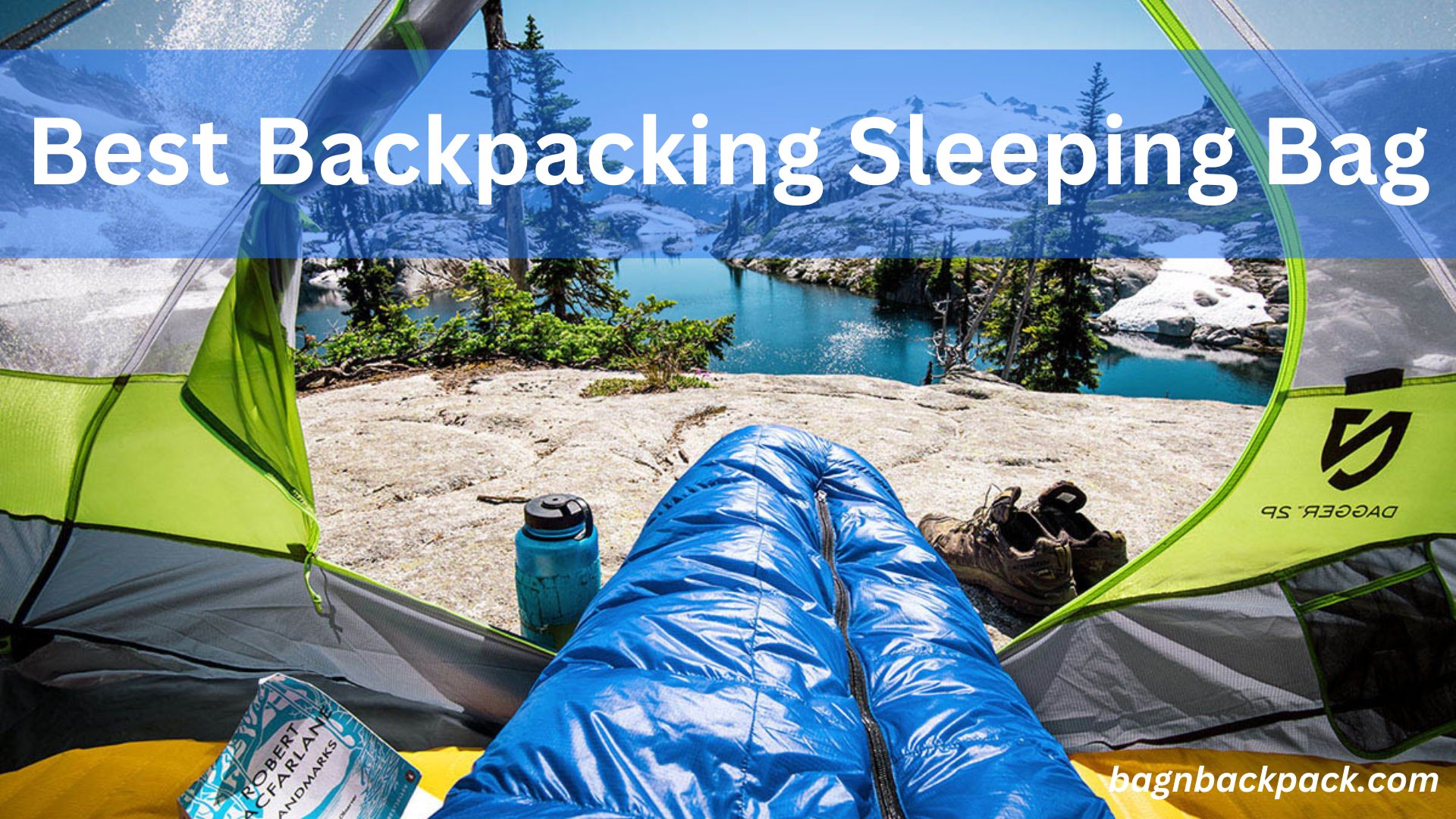When embarking on a backpacking adventure, a good night’s sleep is essential for your physical and mental well-being. That’s where a quality backpacking sleeping bag comes into play. Choosing the right sleeping bag can make all the difference between a restful night under the stars and a restless one. In this article, we will explore the key factors to consider when selecting the best backpacking sleeping bag, including temperature ratings, insulation types, weight and packability, sleeping bag shapes and sizes, additional features, and our top picks for the best backpacking sleeping bags.
Temperature Ratings and Seasons:
Understanding temperature ratings is crucial when selecting a backpacking sleeping bag. Temperature ratings indicate the lowest temperature at which the bag will keep you comfortable. Consider the seasons and weather conditions you will encounter during your backpacking trips to choose an appropriate temperature rating for your needs. Additionally, be aware of the different sleeping bag options available for different seasons, such as lightweight summer bags or insulated winter bags.
Insulation Types:
Two common insulation types for backpacking sleeping bags are down and synthetic insulation. Down insulation, made from the soft feathers of ducks or geese, offers excellent warmth-to-weight ratio and compressibility. On the other hand, synthetic insulation, usually made from polyester fibers, provides better insulation when wet and is more affordable. Consider the benefits and considerations of each insulation type based on your backpacking preferences and environmental conditions.
Weight and Packability:
When backpacking, every ounce matters. Opting for a lightweight and packable sleeping bag can significantly reduce your overall pack weight. Balancing weight and insulation is crucial, as you want a sleeping bag that provides adequate warmth without being overly heavy or bulky. Look for sleeping bags that are designed with lightweight materials and feature compressible designs for easy packing in your backpack.
Sleeping Bag Shapes and Sizes:
Sleeping bag shapes can vary, with mummy-shaped bags being the most common for backpacking. Mummy-shaped bags are narrower at the feet and wider at the shoulders, offering a snug fit that helps retain body heat. Semi-rectangular and rectangular bags provide more room to move but may sacrifice some warmth and weight efficiency. Consider your personal preferences and the trade-offs between comfort and insulation when selecting the shape and size of your backpacking sleeping bag.
Additional Features:
Pay attention to additional features that can enhance your sleeping experience. A well-designed hood and draft collar help seal in warmth and prevent cold drafts. The zipper design and length should be easy to operate and offer ventilation options. The footbox shape and insulation play a role in keeping your feet warm. Lastly, consider the durability and materials of the sleeping bag to ensure it withstands the rigors of backpacking.
Top Picks: Best Backpacking Sleeping Bags:
Option 1: Western Mountaineering UltraLite

The Western Mountaineering UltraLite is a top-notch backpacking sleeping bag that stands out for its exceptional features. Here are the key highlights:
- Temperature Rating: With a temperature rating of 20°F (-7°C), the UltraLite ensures optimal warmth and comfort during three-season backpacking trips.
- Fill Power: It is filled with high-quality 850-fill power goose-down insulation, offering excellent loft and efficient heat retention without adding excess weight.
- Weight: Weighing only 1 pound 13 ounces, this sleeping bag is impressively lightweight, allowing for easy carrying on long treks and minimizing overall pack weight.
- Spacious Footbox: The UltraLite provides a spacious foot box that allows your feet to move comfortably, promoting better circulation and reducing discomfort.
Option 2: Therm-a-Rest Hyperion 20
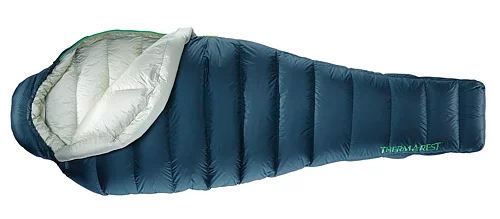
The Therm-a-Rest Hyperion 20 is a standout choice for backpackers seeking a lightweight and water-resistant sleeping bag. Here’s why it stands out:
- Ultralight Design: Weighing just 1 pound 7 ounces, the Hyperion 20 is one of the lightest backpacking sleeping bags available. It allows you to minimize pack weight without compromising on warmth and comfort.
- Water-Resistant Insulation: The 900-fill Nikwax hydrophobic down insulation repels moisture, keeping you dry and warm even in damp conditions. This feature is especially beneficial in humid environments or during unexpected rain.
- Removable SynergyLink Connectors: The sleeping bag features removable SynergyLink connectors, which integrate the bag with compatible sleeping pads for enhanced comfort and to prevent slipping off the pad during the night.
Option 3: Marmot Helium
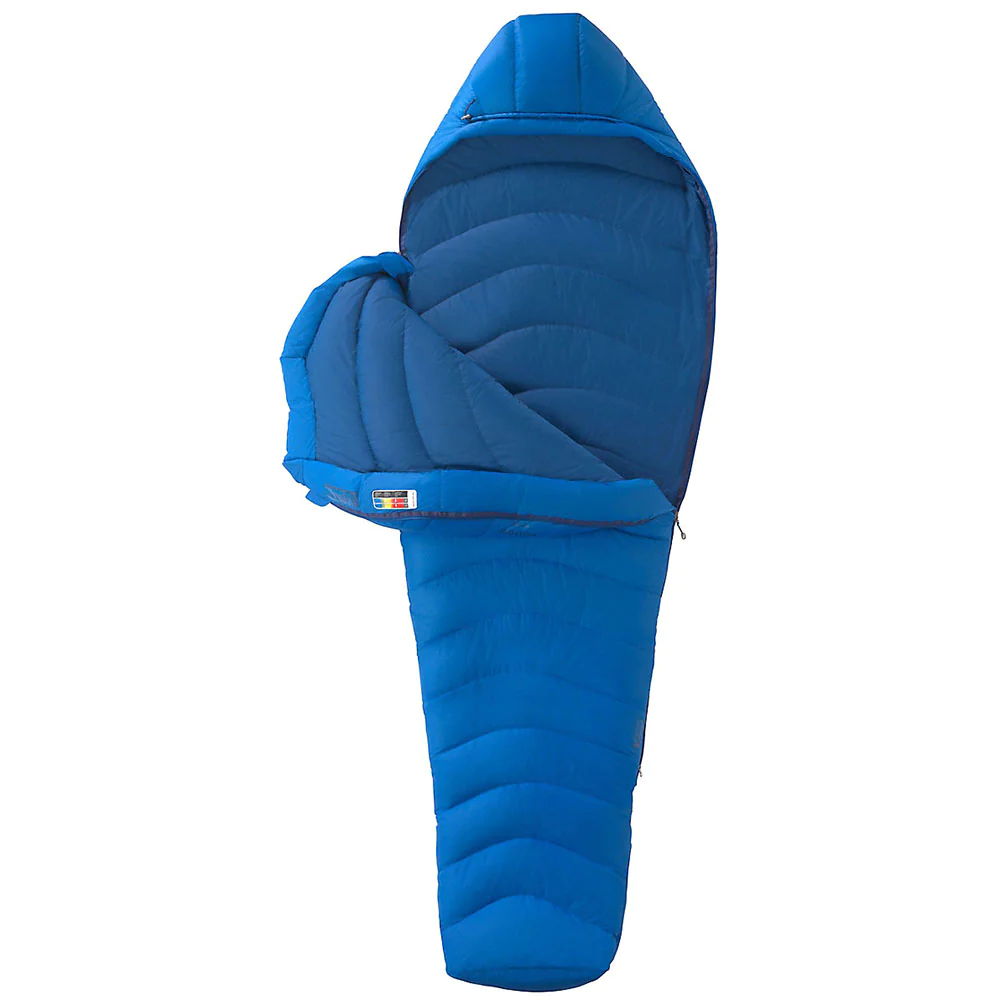
The Marmot Helium is a high-quality sleeping bag that offers excellent value and affordability without compromising on performance. Here’s why it is a great choice:
- Temperature Rating: With a temperature rating of 15°F (-9°C), the Helium provides ample insulation for chilly nights, making it suitable for various seasons and climates.
- Quality Materials: The sleeping bag features 800-fill-down insulation, ensuring superior warmth and loft. It is also constructed with durable fabrics and zippers, guaranteeing long-lasting performance.
- Lightweight and Packable: Weighing 2 pounds 3 ounces, the Helium strikes a balance between weight and insulation. It is highly packable, allowing for easy storage and transportation during backpacking trips.
Option 4: Nemo Tensor Insulated:
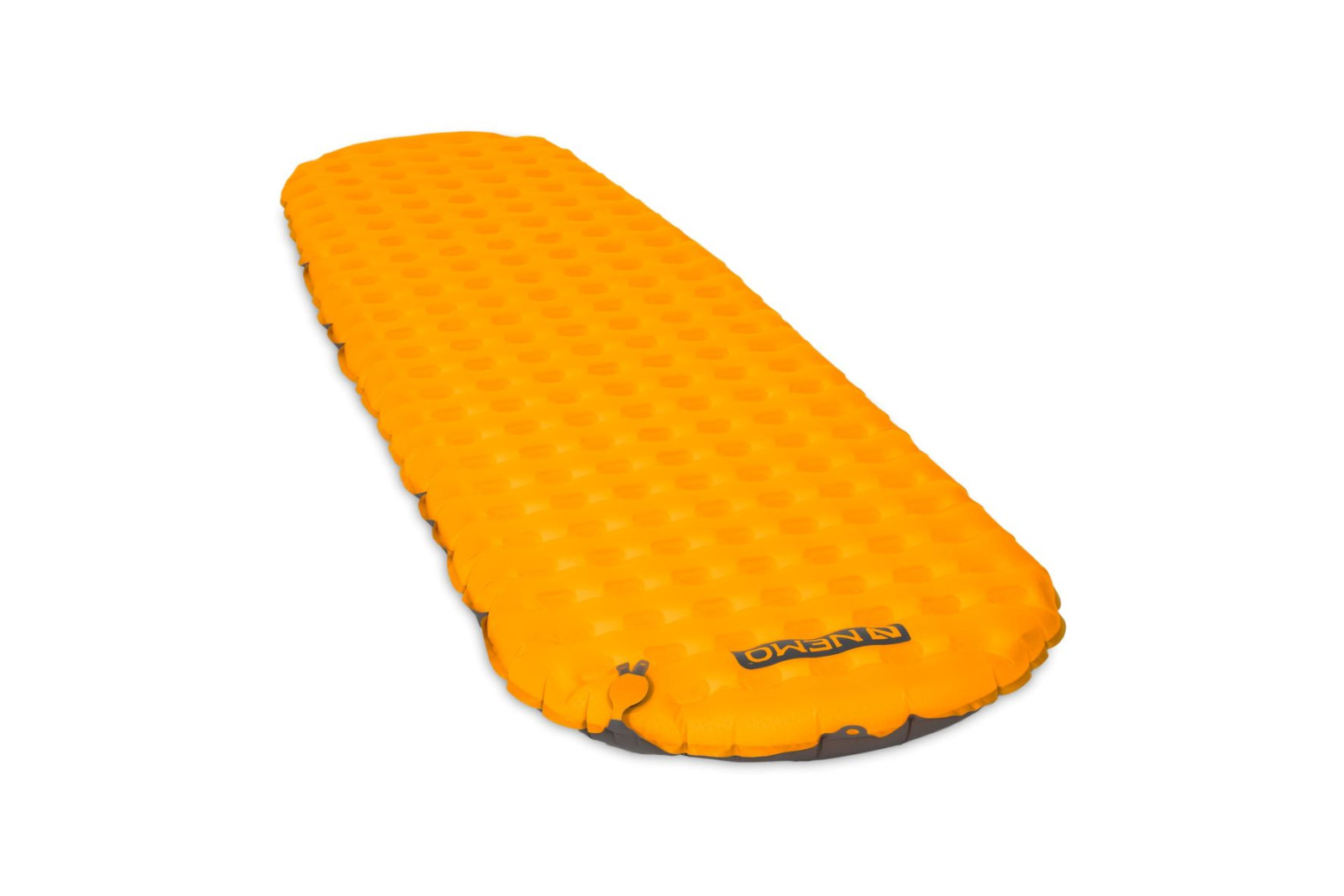
The Nemo Tensor Insulated sleeping bag is a top contender for backpackers seeking comfort and insulation. Here are its noteworthy features:
- Insulation: The Tensor Insulated utilizes synthetic Primaloft insulation, which provides reliable warmth even in damp conditions. This makes it an excellent choice for backpacking trips in humid environments or during wet weather.
- Lightweight Design: Weighing only 1 pound 8 ounces, this sleeping bag is impressively lightweight, making it easy to carry on long hikes. It won’t weigh you down or add unnecessary bulk to your backpack.
- Integrated Foot Pump: One unique feature of the Tensor Insulated is the integrated foot pump, allowing for effortless inflation and deflation. This convenient feature saves time and effort, ensuring a quick and hassle-free setup.
Option 5: REI Co-op Magma 15:
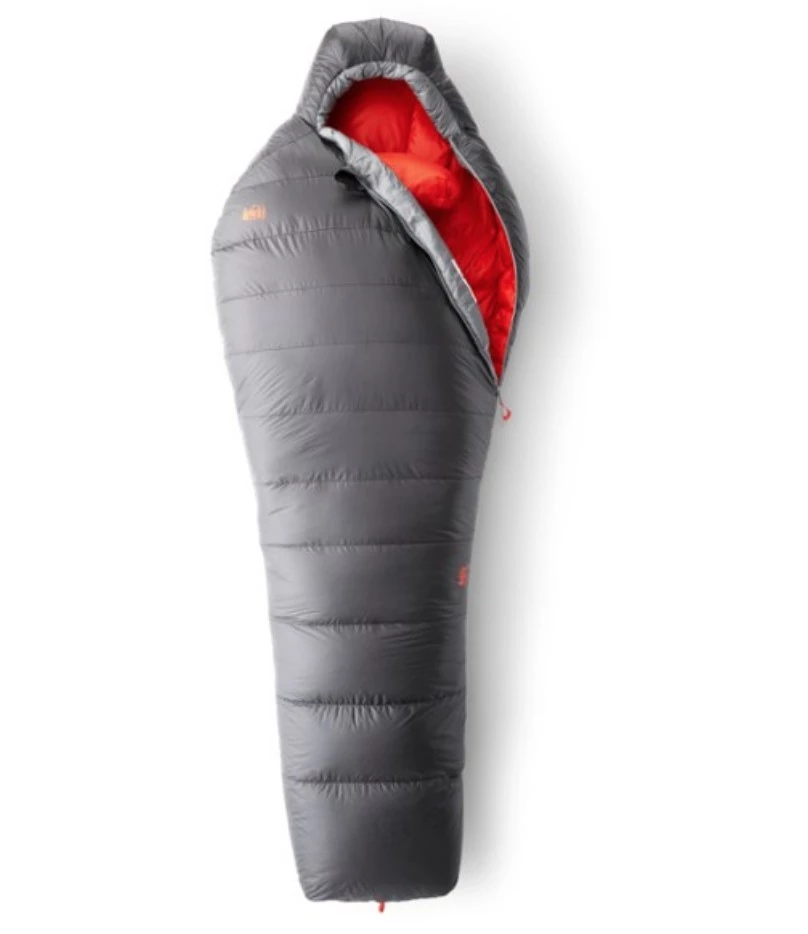
The REI Co-op Magma 15 sleeping bag is a reliable and affordable option for backpackers who value quality. Here’s what makes it a standout choice:
- Temperature Rating: With a temperature rating of 15°F (-9°C), the Magma 15 offers excellent insulation for cold nights on the trail. It keeps you warm and cozy, ensuring a comfortable night’s sleep.
- High-Quality Fill Power: The Magma 15 is filled with 850-fill goose-down insulation, providing exceptional warmth and loft. The high-quality fill power ensures efficient heat retention, keeping you comfortable throughout the night.
- Water-Resistant: This sleeping bag is treated with a durable water-repellent (DWR) finish, making it resistant to moisture. It repels light rain and prevents the insulation from clumping, maintaining its loft and insulating properties.
- Value for Money: The Magma 15 offers great value for its performance and quality. It provides features and performance comparable to higher-priced options while being more budget-friendly.
Care and Maintenance:
Proper care and maintenance of your backpacking sleeping bag are essential for its longevity. Learn about proper storage techniques, cleaning instructions, and repairing minor damages to ensure your sleeping bag remains in optimal condition for future adventures.
Frequently Asked Questions (FAQs):
Q1: What temperature rating should I look for in a backpacking sleeping bag?
A1: The temperature rating indicates the lowest temperature at which the sleeping bag can keep you warm. It’s important to choose a bag with a temperature rating suitable for the expected weather conditions during your backpacking trips. Consider factors such as the season, location, and personal temperature preferences when selecting a temperature rating.
Q2: Down or synthetic insulation – which is better for a backpacking sleeping bag?
A2: Both down and synthetic insulation have their pros and cons. Down insulation offers excellent warmth-to-weight ratio and compressibility, making it ideal for lightweight backpacking. Synthetic insulation performs better in wet conditions, retains insulation properties when damp, and is generally more affordable. Choose based on your budget, expected weather conditions, and personal preferences.
Q3: How important is weight when choosing a backpacking sleeping bag?
A3: Weight is crucial for backpackers as it affects overall pack weight and carrying comfort. Lightweight sleeping bags are preferred for backpacking to minimize the strain on your back and allow for easier mobility on the trail. However, balance weight with other factors like insulation, durability, and comfort to find the right balance for your needs.
Q4: What is the difference between mummy and rectangular sleeping bags?
A4: Mummy sleeping bags have a tapered shape, narrower at the feet and wider at the shoulders, which helps maximize warmth and reduce weight. Rectangular sleeping bags offer more room for movement but may not be as efficient in retaining heat. Consider your preference for mobility and warmth when choosing between the two styles.
Q5: How do I properly care for and maintain a backpacking sleeping bag?
A5: Proper care can prolong the lifespan and performance of your sleeping bag. Follow the manufacturer’s instructions for cleaning and storing your bag. Avoid storing it compressed for long periods, as this can damage the insulation. Use a sleeping bag liner to minimize the need for frequent washing. Air-dry your sleeping bag after each use to maintain its loft and insulation properties.
Q6: Can I use a backpacking sleeping bag for other activities like camping or hiking?
A6: Yes, backpacking sleeping bags can be used for various outdoor activities, including camping and hiking. However, keep in mind the specific requirements of each activity. Camping bags may prioritize comfort and roominess, while hiking bags focus on weight and compactness. Choose a sleeping bag that aligns with your intended activities and their specific demands.
By addressing these frequently asked questions, we hope to provide you with valuable information to make informed decisions when selecting and using a backpacking sleeping bag. Remember to consider factors such as temperature rating, insulation type, weight, and care instructions to find the best sleeping bag that meets your needs and enhances your backpacking experience.
Conclusion:
A high-quality backpacking sleeping bag is a key investment for any backpacker seeking restful nights in the wilderness. Consider temperature ratings, insulation types, weight and packability, sleeping bag shapes and sizes, and additional features
